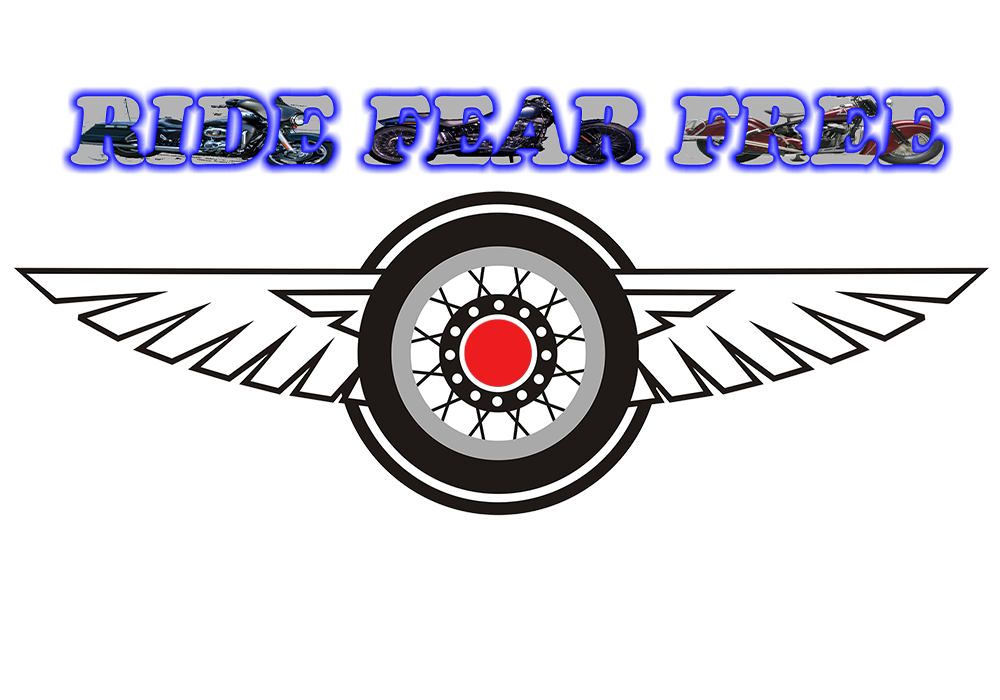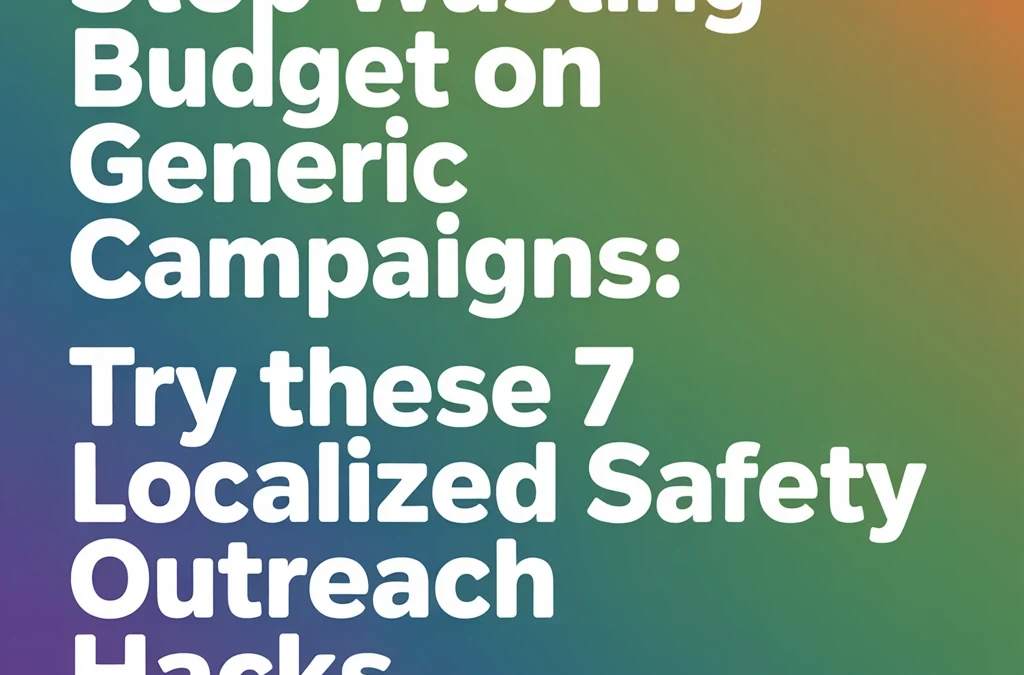Generic motorcycle safety campaigns burn through budgets faster than a Harley burns rubber, yet deliver results that are about as effective as a chocolate teapot. You know the drill: broad messaging, cookie-cutter materials, and campaigns that somehow manage to speak to everyone and no one at the same time.
Localized safety outreach campaigns outperform generic approaches by 40-60% because they connect directly with community needs, cultural contexts, and specific riding challenges. Instead of broadcasting one-size-fits-all messages, these targeted strategies build authentic relationships with riders and drive measurable behavior change at the neighborhood level through strategic coalitions, hyper-targeted messaging, and culturally relevant communications.
The truth is, motorcycle safety isn't a universal challenge. A campaign that works in rural Montana won't resonate in downtown Miami. Weather patterns, traffic conditions, rider demographics, and local riding culture all demand different approaches. Smart agencies and safety organizations are ditching the spray-and-pray method for surgical precision.
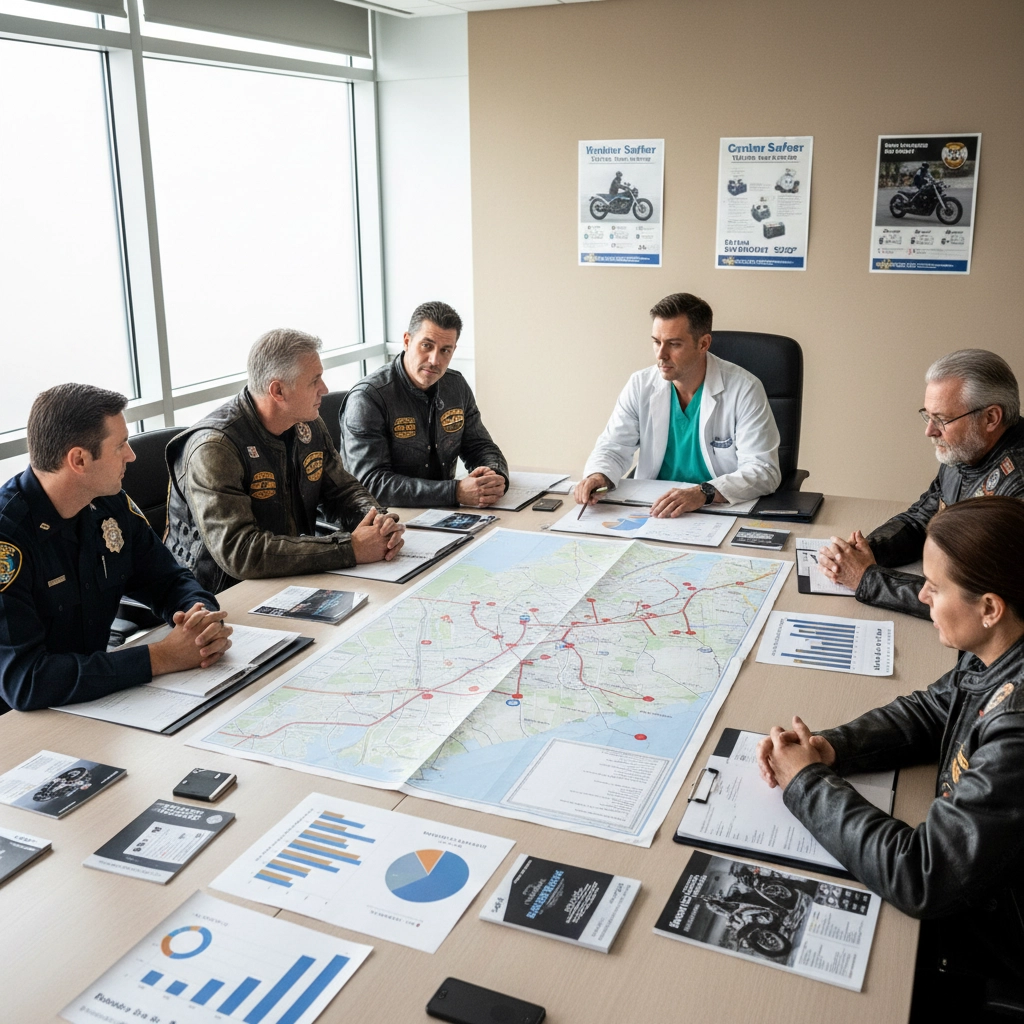
Hack #1: Build Strategic Local Coalition Networks
Stop trying to be the lone voice shouting into the wind. Form dedicated coalitions of motorcycle safety advocates who can make significant contributions to your campaign. Your coalition should include key figures from law enforcement, motorcycle dealerships, riding clubs, trauma centers, insurance agents, and local media representatives.
This approach works because it leverages existing community trust networks. When the local Harley dealer endorses your helmet campaign, riders listen. When the motorcycle club president talks about defensive riding techniques, members pay attention. Each coalition member becomes a multiplier for your safety message.
Pro tip: Assign specific roles to each coalition member. Give the trauma surgeon statistics to share. Ask the insurance agent to discuss claim trends. Let the riding club leader address group riding safety. This prevents message overlap and ensures comprehensive coverage of safety topics.
Hack #2: Deploy Hyper-Targeted Neighborhood Strategies
Forget city-wide campaigns. Focus your resources on concentrated geographic areas where motorcycle accidents cluster. This strategy involves zooming in on specific neighborhoods and understanding their unique culture, values, and riding challenges.
Is there a winding canyon road where sport bike riders congregate on weekends? Target them with cornering and speed management messaging. Got a retirement community where older riders cruise on touring bikes? Focus on visibility and intersection safety. Different neighborhoods require different safety conversations.

Neighborhood-specific targeting allows you to craft messages that resonate with local concerns. Use local accident data, road conditions, and riding patterns to inform your approach. A generic "ride safe" message gets ignored. A targeted "Watch for gravel on the Roosevelt Boulevard curves after rainstorms" gets remembered.
Hack #3: Establish Your Media Champion System
Identify and cultivate relationships with local media outlets that have the largest audience base in your target area. Include these media champions directly in your coalition and assign them specific roles in amplifying your safety message.
Local media coverage carries significantly more weight than national campaigns because residents trust familiar faces and voices from their community. The morning radio DJ who mentions your motorcycle safety tip during traffic reports reaches more local riders than a Super Bowl commercial.
The key: Don't just send press releases. Build actual relationships. Invite media personalities to ride-along with motorcycle safety courses. Let them interview accident survivors. Give them exclusive access to local crash data analysis. When they become invested in the story, coverage becomes authentic advocacy.
Hack #4: Master Boots-on-the-Ground Outreach
Implement door-to-door outreach strategies that allow you to package your safety message for specific individuals. While this approach requires more time investment, with conversations averaging 3-15 minutes each, it delivers exceptional results because you can address individual concerns and barriers in real-time.
Set up informational booths at motorcycle dealerships, bike nights, and riding events. Train your outreach staff on local road hazards and equip them with neighborhood-specific data and solutions. When someone mentions they're concerned about riding in heavy traffic, you can immediately address lane positioning and defensive riding techniques.
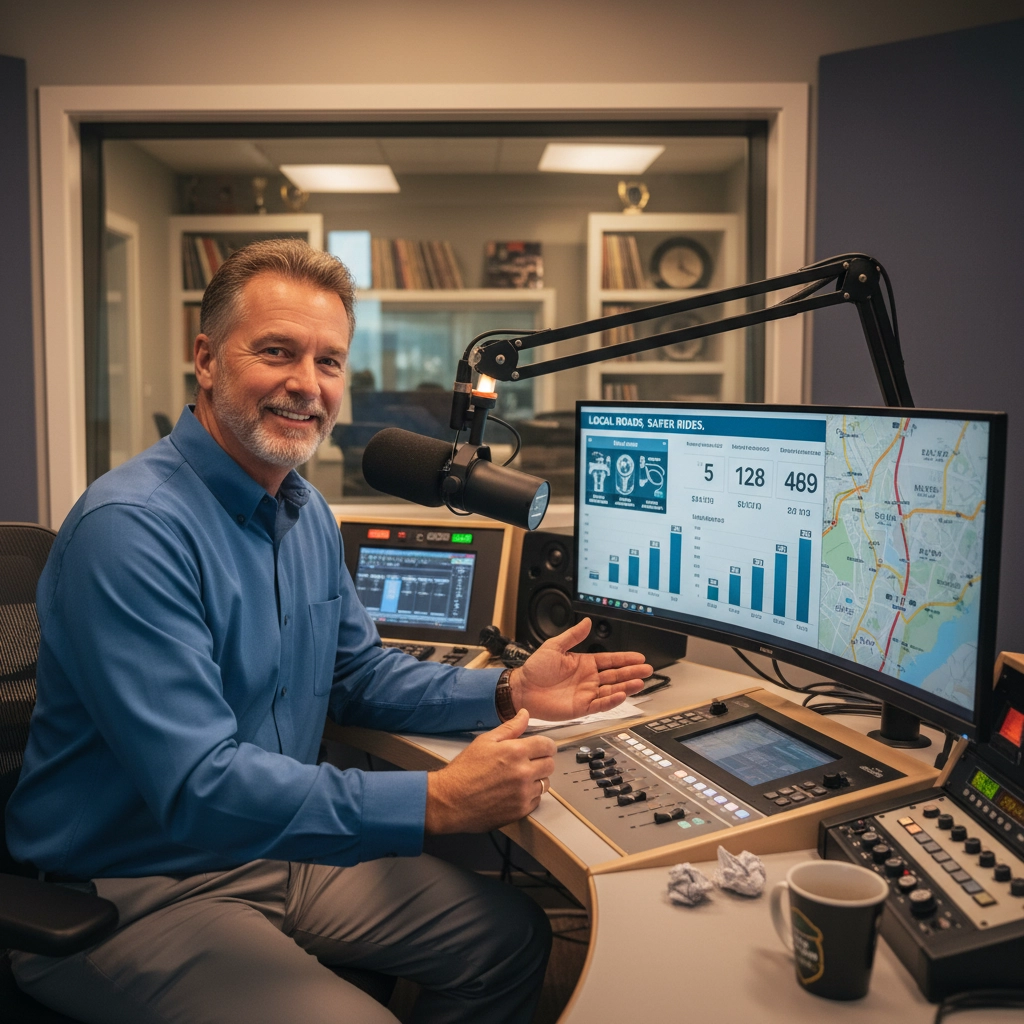
This strategy works because it's conversational, not promotional. You're not selling safety, you're solving problems. The rider who mentions their spouse's concerns about motorcycle safety gets different information than the new rider asking about protective gear.
Hack #5: Leverage Community Events and Riding Gatherings
Coordinate with and actively participate in existing local events rather than creating separate safety campaigns. Set up informational displays at bike shows, charity rides, and motorcycle rallies where you can engage in casual conversations about safety concerns.
This strategy works because people are already in a receptive, community-minded state and you're meeting them where they naturally gather. The conversation flows naturally from "Nice bike" to "Have you noticed how many cars don't see motorcycles at that intersection on Fifth Street?"
Smart move: Partner with local riding events as a safety sponsor rather than competing with them. Provide free safety checks, offer defensive riding tips, or sponsor the safety briefing at group rides. You become part of the riding community rather than an outside voice lecturing about safety.
Hack #6: Host Targeted Educational Sessions
Organize workshops, training sessions, and discussion groups that address specific safety challenges in each area. These intimate settings allow for detailed discussions about local hazards, solutions, and resources.
Focus groups help you understand community perceptions and tailor your approach, while educational workshops provide actionable safety skills riders can immediately implement. A generic online safety course gets bookmarked and forgotten. A local workshop addressing "Surviving Rush Hour Traffic on Interstate 25" gets attended and remembered.
Format options that work:
- Breakfast meetings at motorcycle dealerships
- Evening workshops at community centers
- Weekend training sessions at parking lots
- Online webinars focused on seasonal riding challenges
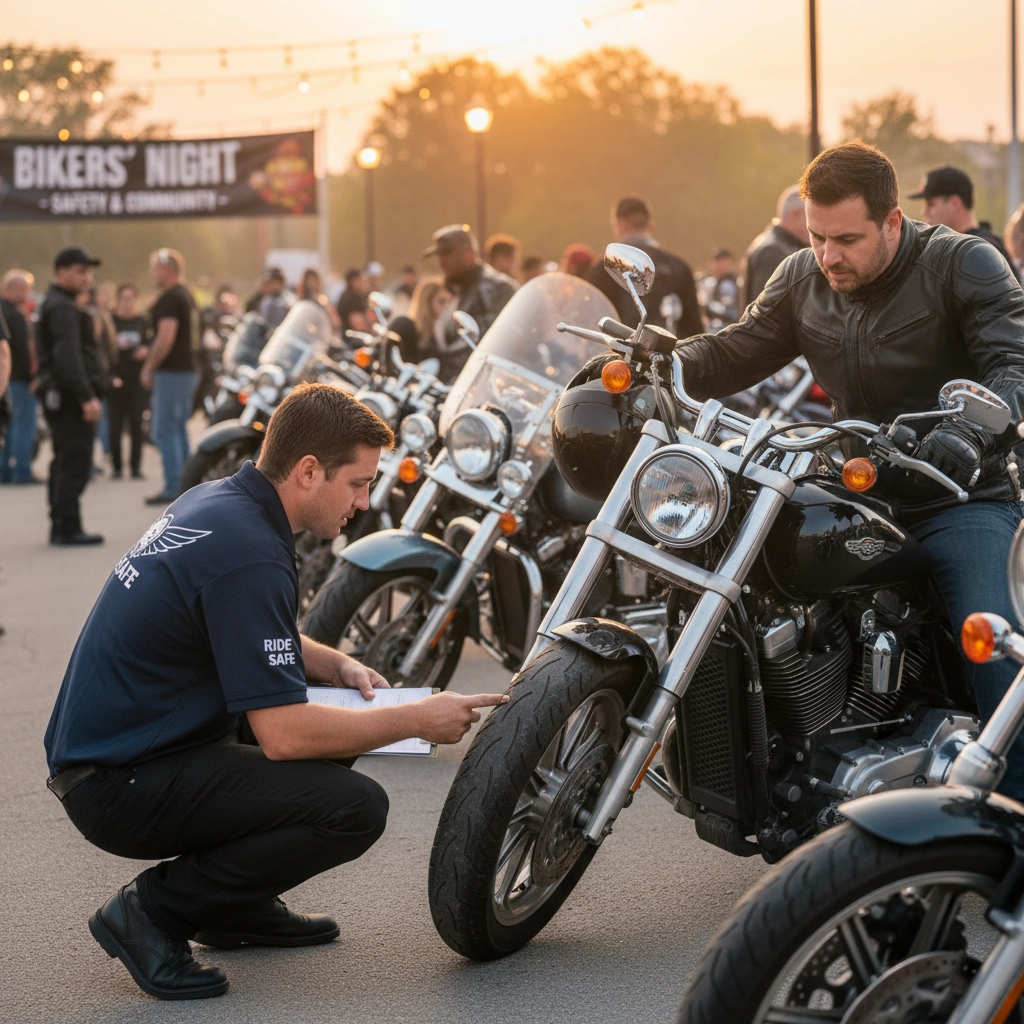
Hack #7: Create Culturally Relevant Messaging
Develop safety materials and messages that reflect the riding culture and communication preferences of specific communities. This might mean using different imagery for cruiser riders versus sport bike enthusiasts, or addressing safety concerns through the lens of local values and priorities.
Cultural relevance ensures your message doesn't just reach your audience, it actually resonates and motivates behavior change. A safety campaign featuring touring bikes and older riders won't connect with the sport bike community at weekend track days. Similarly, aggressive messaging about speed might backfire with riders who already feel stigmatized.
Consider these cultural factors:
- Riding style preferences (touring, sport, cruising, adventure)
- Age demographics and experience levels
- Local riding traditions and group dynamics
- Seasonal riding patterns and challenges
- Economic factors affecting gear purchases
Measuring Success Beyond Generic Metrics
These localized approaches require different success metrics than broad campaigns. Track neighborhood-specific incident reduction, community event attendance, coalition member engagement, and qualitative feedback from riders. The key advantage is that these strategies build lasting community capacity for ongoing safety improvement.
Success looks like riding clubs self-policing dangerous behaviors, dealerships proactively discussing safety with customers, and local media regularly featuring motorcycle safety content without prompting. You've created sustainable change that extends far beyond any single campaign period.
Ready to revolutionize your motorcycle safety outreach? These localized strategies require more planning and relationship-building than generic campaigns, but they deliver results that actually save lives and build lasting community support for motorcycle safety.
Connect with Ride Fear Free for expert motorcycle safety campaign strategies:
🌐 www.RideFearFree.net
📞 AI Receptionist: +1 (970) 693-4854
👤 Dan Kost, CEO – Connect on LinkedIn
Share this post:
LinkedIn | Facebook | X | Instagram
Tags: #Motivation #Branding #Strategy #Marketing #AdvertisingAndMarketing #digitalmarketing #Innovation #Sports #MotorcycleSafety #LocalOutreach #CommunityEngagement #SafetyCampaigns #TargetedMarketing #RiderEducation
